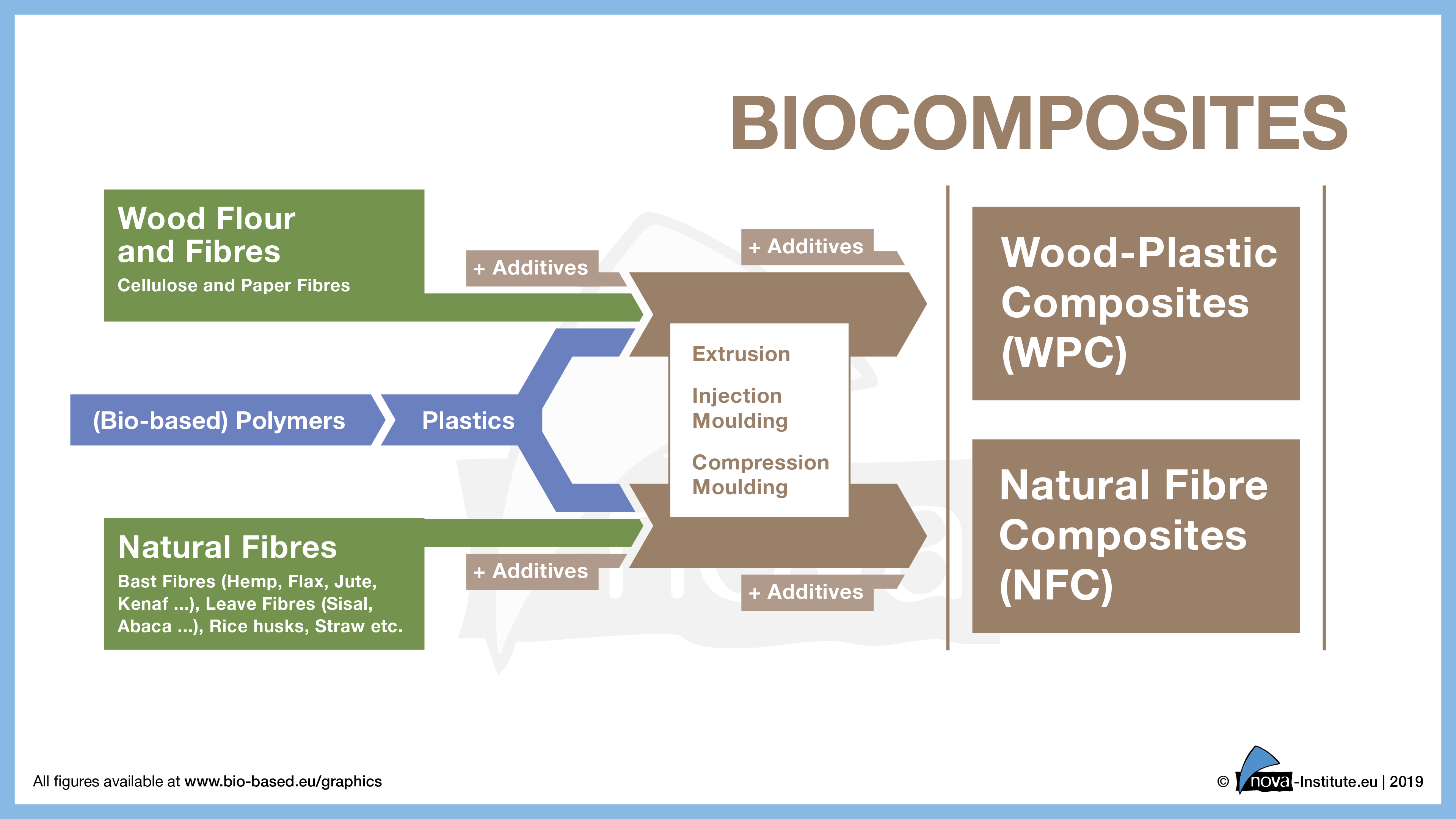What are biocomposites? Basically, any material that consists of fibres and a binder (i.e., resin, polymer) can be called a composite. Biocomposite is a collective term to refer to fibre-reinforced materials with partly natural origin. Fibre content ranges from 15% up to 75% depending on application and production method. Following picture shows the big family of biocomposites with different kind of raw materials and production methods. Even though biocomposites can be used in a wide range of applications, there are a lot of uncertainties about how biocomposites can be recycled, and how recycled biocomposites can be turned back into value.

Therefore, an online meeting was initiated and organised by nova-Institute on February 25th with different stakeholders from the biocomposite sector to discuss the framework, topics, and direction of a possible industry-group with the name “The Biocomposite Recycling Industry Group (BRIG)”. The plan is to set up an industry driven initiative, which considers all stakeholders including the regulators, to recognise the importance of new materials such as biocomposites and promote the recycling thereof. The group should work actively as a recognised and representative industry body that aims to jointly develop the framework conditions of biocomposites in the market in order to create acceptance. One of the goals is that the same recycling opportunities afforded to traditional materials are afforded to biocomposites.
In total 37 persons from 12 different countries participated to the first meeting. Please find the summary of the meeting and outlined recommendations for the next steps here: www.news.bio-based.eu/media/2021/03/21-03-18-BRIG-Protocol-minutes_nova.pdf
If you are interested in BRIG please contact: asta.partanen@nova-institut.de
Source
Share
Renewable Carbon News – Daily Newsletter
Subscribe to our daily email newsletter – the world's leading newsletter on renewable materials and chemicals













